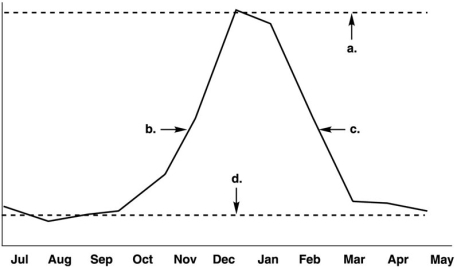A) subclinical.
B) latent.
C) acute.
D) subacute.
E) zoonotic.
Correct Answer

verified
Correct Answer
verified
Multiple Choice
In which of the following diseases can gender be considered a viable predisposing factor?
A) pneumonia
B) salmonellosis
C) anthrax
D) urinary tract infections
E) tetanus
Correct Answer

verified
Correct Answer
verified
Multiple Choice
A nosocomial infection is
A) always caused by pathogenic bacteria.
B) always caused by medical personnel.
C) only a result of surgery.
D) always present, but is inapparent at the time of hospitalization.
E) acquired during the course of hospitalization.
Correct Answer

verified
Correct Answer
verified
Multiple Choice
Which of the following diseases is NOT spread by droplet infection?
A) botulism
B) measles
C) tuberculosis
D) the common cold
E) diphtheria
Correct Answer

verified
Correct Answer
verified
Multiple Choice
The CDC is located in
A) Washington, DC.
B) Atlanta, GA.
C) Los Angeles, CA.
D) New York City, NY.
E) Chicago, IL.
Correct Answer

verified
Correct Answer
verified
Multiple Choice
If a prodromal period exists for a certain disease, it should occur prior to
A) convalescence.
B) decline.
C) illness.
D) incubation.
Correct Answer

verified
Correct Answer
verified
Multiple Choice
Biological transmission differs from mechanical transmission in that biological transmission
A) requires direct contact.
B) occurs when a pathogen is carried on the feet of an insect.
C) works only with noncommunicable diseases.
D) involves reproduction of a pathogen in an arthropod vector prior to transmission.
E) involves fomites.
Correct Answer

verified
Correct Answer
verified
True/False
Compromised hosts are always suffering from suppressed immune systems.
Correct Answer

verified
Correct Answer
verified
Multiple Choice
Which of the following pairs is mismatched?
A) influenza - droplet infection
B) syphilis - direct contact
C) salmonellosis - vehicle transmission
D) malaria - vector
E) None of the pairs is mismatched.
Correct Answer

verified
Correct Answer
verified
True/False
A researcher only needs to select a cohort group when implementing an analytical epidemiological study.
Correct Answer

verified
Correct Answer
verified
True/False
Diseases that are referred to as emerging infectious diseases have only been discovered in the past fifty years.
Correct Answer

verified
Correct Answer
verified
Multiple Choice
Which of the following can contribute to postoperative infections?
A) errors in aseptic technique
B) using syringes more than once
C) antibiotic resistance
D) normal microbiota on the operating room staff
E) All of the answers are correct.
Correct Answer

verified
Correct Answer
verified
Multiple Choice
The science that deals with when diseases occur and how they are transmitted is called
A) public health.
B) morbidity and mortality.
C) epidemiology.
D) communicable disease.
E) ecology.
Correct Answer

verified
Correct Answer
verified
Multiple Choice
Figure 14.1  Figure 14.1 shows the incidence of influenza during a typical year. Which letter on the graph indicates the endemic level?
Figure 14.1 shows the incidence of influenza during a typical year. Which letter on the graph indicates the endemic level?
A) a
B) b
C) c
D) d
E) The answer cannot be determined based on the information provided.
Correct Answer

verified
Correct Answer
verified
Multiple Choice
Which of the following is NOT a reservoir of infection?
A) a sick animal
B) a hospital
C) a sick person
D) a healthy person
E) None of the answers is correct; all of these can be reservoirs of infection.
Correct Answer

verified
Correct Answer
verified
Multiple Choice
Which of the following is NOT a communicable disease?
A) malaria
B) AIDS
C) tetanus
D) typhoid fever
E) tuberculosis
Correct Answer

verified
Correct Answer
verified
Multiple Choice
Which of the following statements about nosocomial infections is FALSE?
A) They may be caused by drug-resistant bacteria.
B) They may be caused by normal microbiota.
C) They may be caused by opportunists.
D) They occur in compromised patients.
E) The patient was infected before hospitalization.
Correct Answer

verified
Correct Answer
verified
True/False
MMWR is a publication by the CDC that reports on only emerging diseases.
Correct Answer

verified
Correct Answer
verified
True/False
Urinary tract infections are the most common forms of nosocomial infections.
Correct Answer

verified
Correct Answer
verified
Multiple Choice
One effect of washing regularly with antibacterial agents is the removal of normal microbiota. This can result in
A) no bacterial growth because washing removes their food source.
B) normal microbiota returning immediately.
C) fewer diseases.
D) increased susceptibility to disease.
E) body odor.
Correct Answer

verified
Correct Answer
verified
Showing 21 - 40 of 51
Related Exams